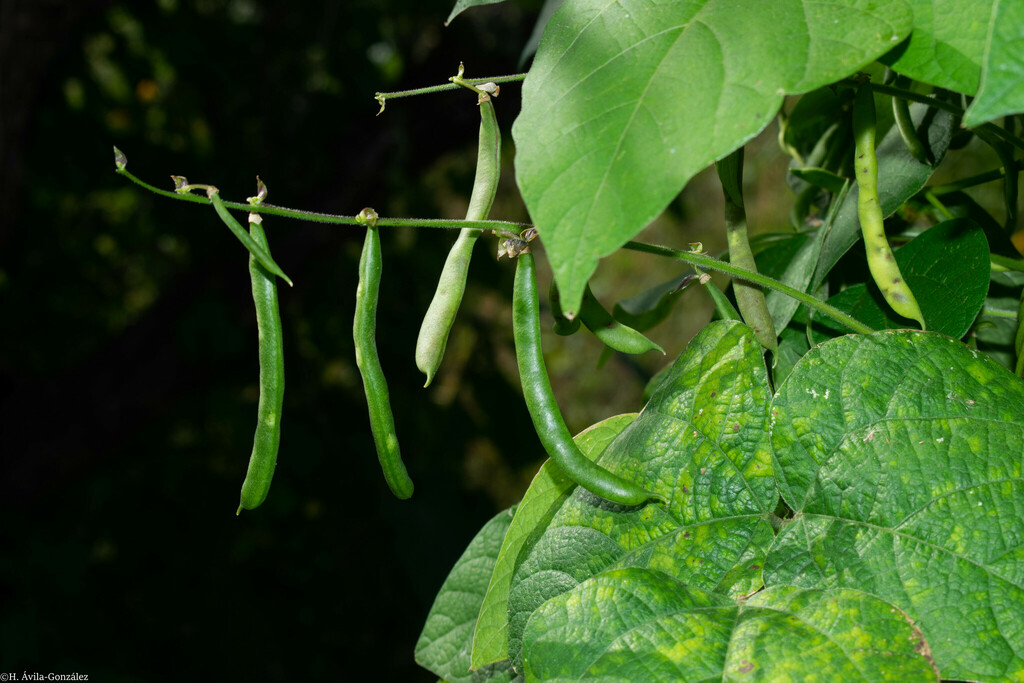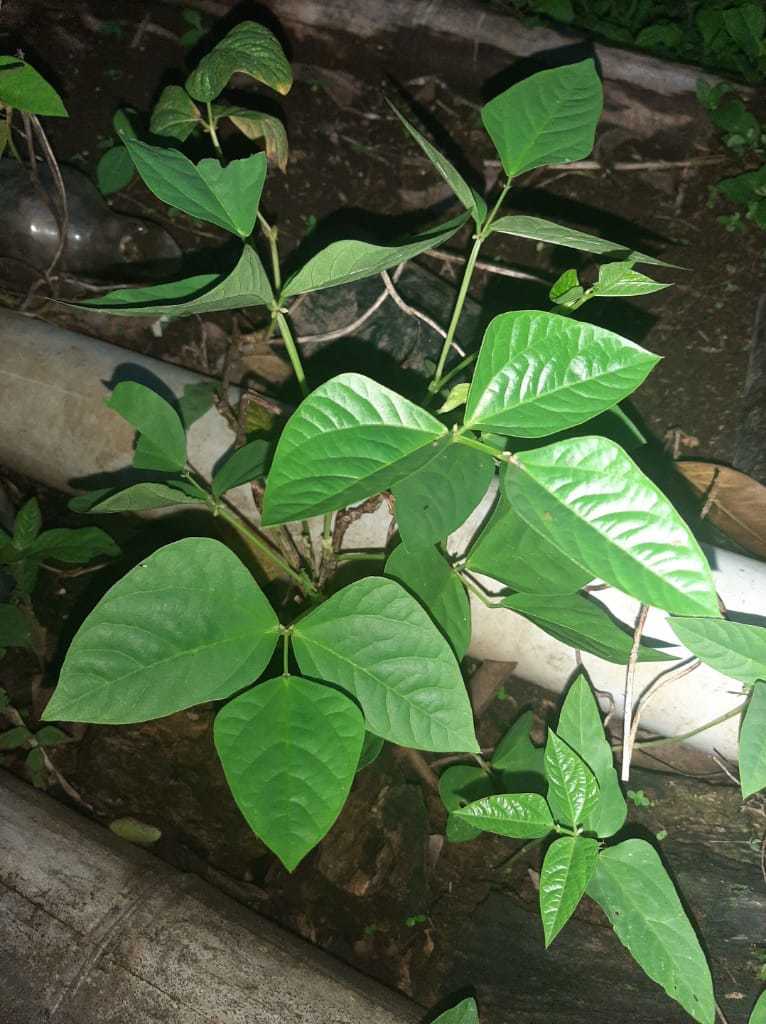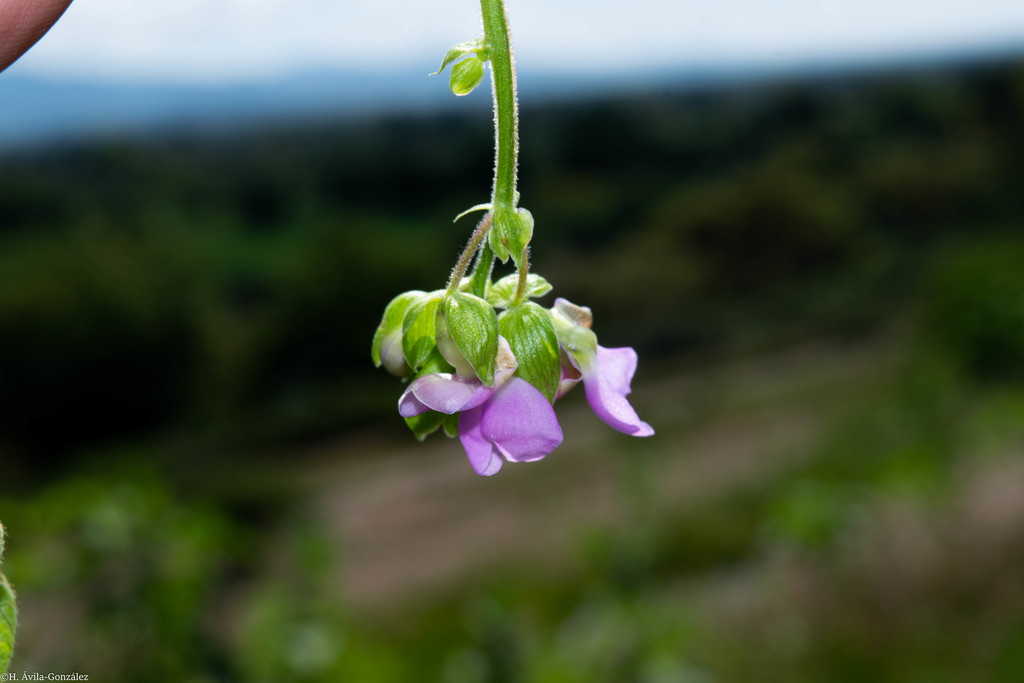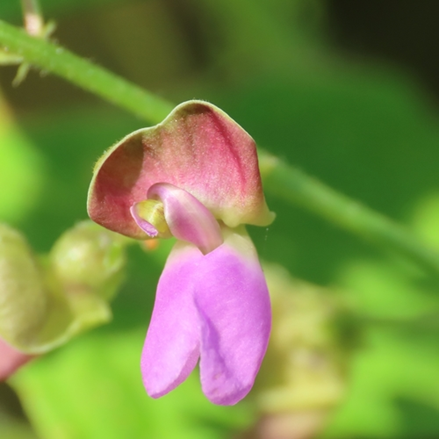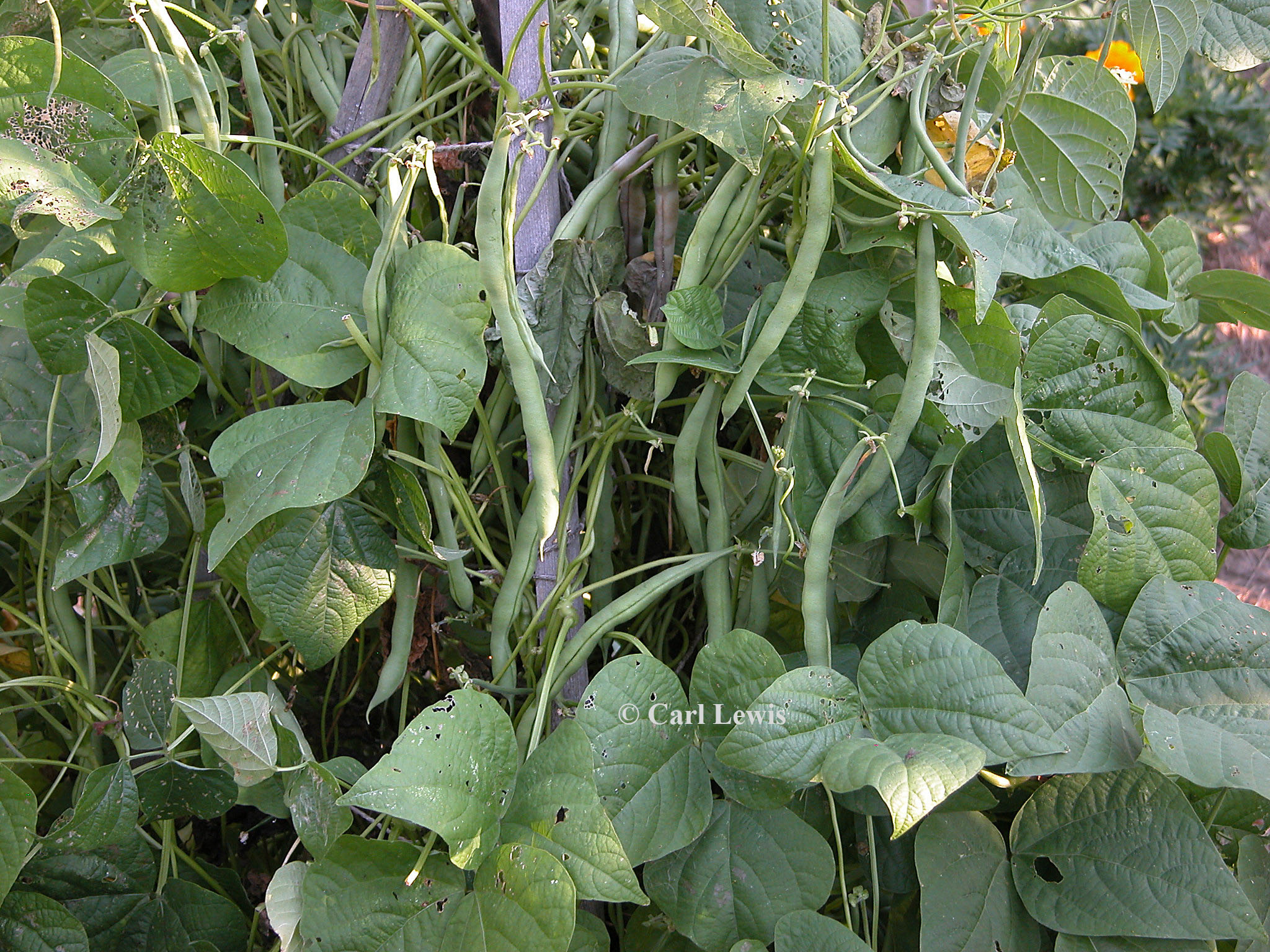ເລກລຳດັບທີ: 2720
ລະດັບການຮວບຮວມຂໍ້ມູນ: ເກີອບສົມບູນ
ປັບປູງຄັ້ງລ່າສຸດ: 2025-01-30
ຖົ່ວແຂກ
Common bean
Phaseolus vulgaris L.
ພືດ
ພືດລົ້ມລຸກ
ຫຍ້າ ແລະ ທັນຍາພືດ
×
ຊື່ທ້ອງຖີ່ນ:
( Bean, Common Haricot, Common-Bean, Dwarf Bean, Frash Bean, French Bean, French-Bean, Garden Bean, Green Bean)
ຊື່ພ້ອງ
:
Phaseolus aborigineus Burkart
Phaseolus aborigineus var. hondurensis Burkart
Phaseolus albus Hoffmanns.
Phaseolus angulosus Schübl. & G.Martens
Phaseolus asparagioides Schur
Phaseolus capensis Schur
Phaseolus carinatus G.Martens
Phaseolus carinatus var. carneus G.Martens
Phaseolus carinatus var. lividus G.Martens
Phaseolus ceratonoides Schrank
Phaseolus ceratonoides Schrank ex G.Martens
Phaseolus communis Pritz.
Phaseolus compessus DC.
Phaseolus compressus DC.
Phaseolus aborigineus var. hondurensis Burkart
Phaseolus albus Hoffmanns.
Phaseolus angulosus Schübl. & G.Martens
Phaseolus asparagioides Schur
Phaseolus capensis Schur
Phaseolus carinatus G.Martens
Phaseolus carinatus var. carneus G.Martens
Phaseolus carinatus var. lividus G.Martens
Phaseolus ceratonoides Schrank
Phaseolus ceratonoides Schrank ex G.Martens
Phaseolus communis Pritz.
Phaseolus compessus DC.
Phaseolus compressus DC.
ຊື່ສະກຸນ:
Fabaceae
ຊະນິດໃກ້ຄຽງ:
ໝາກຖົ່ວວອຍ/ Lima Bean
ຖົ່ວອ້ອມ/ Siratro
ຖົ່ວອ້ອມ/ Siratro
ບັນຍາຍລັກສະນະທາງພືດສາດ:
ເປັນພືດລົ້ມລຸກ. ລຳຕົ້ນເປັນຊົງຟຸ່ມ ຫຼື ເປັນເຄືືອ, ຍາວ 3-4 ມ, ເລືອພັນຕາມຕົ້ນໄມ້ອື່ນ, ມີຂົນຊາກຊາກະຈາຍຢູ່ທົ່ວ. ໃບປະສົມຂັ້ນໜຶ່ງແບບຝາມື, ອອກຮຽງສະຫຼັບ. ກ້ານໃບມີຮ່ອງດ້ານເທິງ, ຍາວ 5-7 ຊມ. ໃບຍ່ອຍມີ 3 ໃບ, ໃບປາຍຮູບຫອກ ຫຼື ຮູບຮີ, ກ້ວາງ 4-5 ຊມ, ຍາວ 6-7 ຊມ, ໂຄນໃບມົນ ຫຼື ຕັດ, ຂອບລຽບ, ປາຍແຫຼມ, ໃບຂ້າງຮູບຫອກປີ້ນ, ຮູບໄຂ່ ຫຼື ຮູບຫອກ, ໂຄນໃບບ້ຽວ, ຂອບເປັນແສກເລິກ ຫຼື ລຽບ, ປາຍແຫຼມ, ແຜ່ນໃບບາງ, ມີຂົນຊາກຊາ. ຊໍ່ດອກແບບກະຈະ, ອອກບໍລິເວນງ່າມໃບ ຫຼື ປາຍຍອດ, ຍາວ 10-15 ຊມ. ດອກຍ່ອຍມີຈຳນວນຫຼາຍ, ຮູບດອກຖົ່ວ, ສີຂາວ ຫຼື ສີມ່ວງ. ໝາກເປັນຝັກ, ຮູບຂອບຂະໜານ, ມີຂະໜາດເສັ້ນຜ່າສູນກາງ 0.8-1.5 ຊມ, ຍາວ 10-14 ຊມ. ແກ່ນຮູບທໍ່ກົມ ຫຼື ຮູບແກ່ນຖົ່ວ, ກ້ວາງ 0.2-0.5 ຊມ, ຍາວ 0.5-1 ຊມ, ສີແດງ.
ນິເວດວິທະຍາ
ເຂດກະຈາຍພັນທົ່ວໂລກ:
Native to Argentina Northeast, Argentina Northwest, Bolivia, Colombia, Costa Rica, Ecuador, El Salvador, Guatemala, Honduras, Mexico Central, Mexico Gulf, Mexico Northeast, Mexico Northwest, Mexico Southeast, Mexico Southwest, Nicaragua, Panamá, Peru, Venezuela. [9]
ຊະນິດພັນພື້ນເມືອງໃນພາກຕາເວັນອອກສຽງເໜືອຂອງໂບລີເວຍ, ໂຄລົມເບຍ, ຄອດຕາລິກາ, ເອວາດໍ, ເອລຊັນວາດໍ, ກົວຕາມາລາ, ຮອນດູຣັສ, ພາກກາງຂອງແມັກຊີໂກ, ອ່າວແມັກຊີໂກ, ເມັກຊີໂກຕາເວັນອອກສ່ຽງເໜືອ, ເມັກຊີໂກຕາເວັນອອກສ່ຽງໃຕ້, ແມັກຊີໂກຕາເວັນຕົກສ່ຽງໃຕ້, ນິກາຣາກົວ, ປານາມາ, ເປຣູ ແລະ ເວເນຊູເອຣາ. [9]
Global distribution of the common bean between 2004 to 2024. Source: [2]
ເຂດກະຈາຍພັນຂອງຖົ່ວຂຽວທົ່ວໂລກ ລະຫວ່າງປີ 2004 ຫາ 2024. ແຫຼ່ງທີ່ມາ: [2]
ຊະນິດພັນພື້ນເມືອງໃນພາກຕາເວັນອອກສຽງເໜືອຂອງໂບລີເວຍ, ໂຄລົມເບຍ, ຄອດຕາລິກາ, ເອວາດໍ, ເອລຊັນວາດໍ, ກົວຕາມາລາ, ຮອນດູຣັສ, ພາກກາງຂອງແມັກຊີໂກ, ອ່າວແມັກຊີໂກ, ເມັກຊີໂກຕາເວັນອອກສ່ຽງເໜືອ, ເມັກຊີໂກຕາເວັນອອກສ່ຽງໃຕ້, ແມັກຊີໂກຕາເວັນຕົກສ່ຽງໃຕ້, ນິກາຣາກົວ, ປານາມາ, ເປຣູ ແລະ ເວເນຊູເອຣາ. [9]
Global distribution of the common bean between 2004 to 2024. Source: [2]
ເຂດກະຈາຍພັນຂອງຖົ່ວຂຽວທົ່ວໂລກ ລະຫວ່າງປີ 2004 ຫາ 2024. ແຫຼ່ງທີ່ມາ: [2]
ເຂດກະຈາຍພັນໃນລາວ
:
ລຽບແມ່ນ້ຳຂອງພາກເໜືອ
ທົ່ງພຽງວຽງຈັນ
ທົ່ງພຽງວຽງຈັນ

ເຂດກະຈາຍພັນຕາມພູມສັນຖານ
:
ເຂດຜະລິດພືດຜົນເນີນສູງ
ປ່າເຫຼົ່າອ່ອນ
ເຂດກະສິກຳອື່ນໆ
ສວນຄົວ
ທົ່ງນາ
ປ່າເຫຼົ່າອ່ອນ
ເຂດກະສິກຳອື່ນໆ
ສວນຄົວ
ທົ່ງນາ
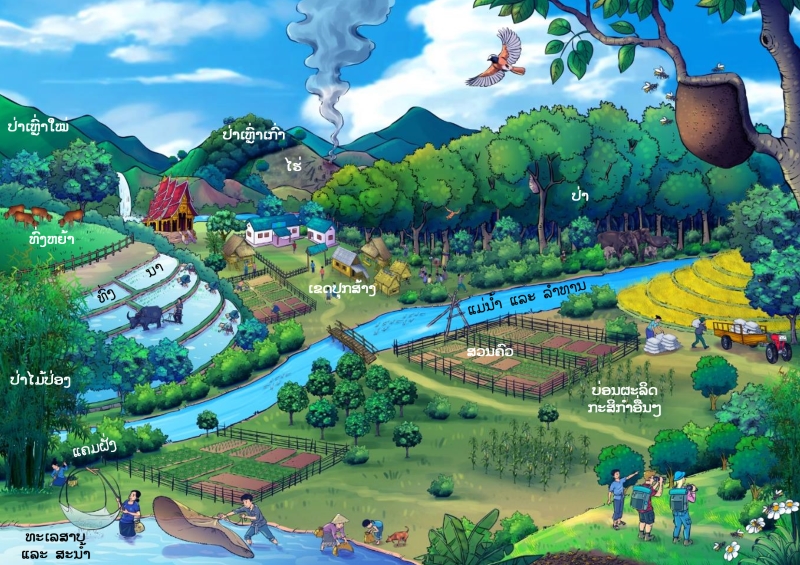
ສະເພາະຖິ່ນໃນລາວ:
ຕ່າງຖິ່ນ
ຮຸກຮານ
:
ບໍ່ຮຸກຮານ
ສະຖານະພາບການອະນູຮັກ IUCN
:
ມີຄວາມສ່ຽງໜ້ອຍສຸດ
ສະຖານະພາບການອະນຸຮັກແຫ່ງຊາດລາວ
:
ບໍ່ຖືກລະບຸໃນບັນຊີປະເພດໃດ
ການນຳໃຊ້
ປະເພດການນຳໃຊ້:
ອາຫານ
ພືດເປັນຢາ
ພືດເປັນຢາ
ບັນຍາຍການນຳໃຊ້:
ອາຫານ: ໃບອ່ອນນຳມາຮັບປະທານເປັນຊຸບ [2]. ຝັກອ່ອນ ແລະ ແກ່ນອ່ອນນຳມາຮັບປະມານເປັນຜັກ [10]. ເສດຕົ້ນຂອງຖົ່ວຂຽວມັກໃຊ້ເປັນອາຫານສັດຫຼັງຈາກເກັບກ່ຽວຖົ່ວແລ້ວ. [6]
ສະໝຸນໄພ: ຖົ່ວຂຽວໄດ້ຮັບການຍອມຮັບວ່າມີປະໂຫຍດຕໍ່ສຸຂະພາບ ແລະ ມີສັບພະຄຸນຫຼາຍຫຼາຍ ເຊັ່ນ: ລະງັບອາການເຈັບ, ຕ້ານອານຸມູນອິດສະຫຼະ, ປ້ອງກັນພະຍາດເບົາຫວານ, ປ້ອງກັນພະຍາດໂລກອ້ວນ, ຕ້ານການອັກເສບ, ປ້ອງກັນການກາຍພັນ, ຕ້ານແບັກທິເຣຍ, ປ້ອງກັນພະຍາດມະເຣັງ, ປ້ອງກັນພະຍາດຕັບ, ຫຼຸດໄຂມັນໃນເລືອດ, ສະຫລາຍຫນິ້ວ ແລະ ຍັງຢັບຢັ້ງທິບຊິນ ແລະ ອັນຟາອະໄມເລສອີກດ້ວຍ. [5], [7].
ສະໝຸນໄພ: ຖົ່ວຂຽວໄດ້ຮັບການຍອມຮັບວ່າມີປະໂຫຍດຕໍ່ສຸຂະພາບ ແລະ ມີສັບພະຄຸນຫຼາຍຫຼາຍ ເຊັ່ນ: ລະງັບອາການເຈັບ, ຕ້ານອານຸມູນອິດສະຫຼະ, ປ້ອງກັນພະຍາດເບົາຫວານ, ປ້ອງກັນພະຍາດໂລກອ້ວນ, ຕ້ານການອັກເສບ, ປ້ອງກັນການກາຍພັນ, ຕ້ານແບັກທິເຣຍ, ປ້ອງກັນພະຍາດມະເຣັງ, ປ້ອງກັນພະຍາດຕັບ, ຫຼຸດໄຂມັນໃນເລືອດ, ສະຫລາຍຫນິ້ວ ແລະ ຍັງຢັບຢັ້ງທິບຊິນ ແລະ ອັນຟາອະໄມເລສອີກດ້ວຍ. [5], [7].
ການປູກ ການລ້ຽງ:
ປູກ ແລະ ທຳມະຊາດ
ລະດູການເກັບກູ້:
ເມສາ
ພຶກສະພາ
ພຶກສະພາ
ການຕະຫຼາດ ແລະ ຕ່ອງໂສ້ມູນຄ່າ:
N/A
ການຄຸ້ມຄອງຈັດການ
ສະພາບໂດຍລວມ:
ອຸນຫະພູມ: ຖົ່ວຂຽວຈະເລີນເຕີບໂຕໄດ້ດີໃນອຸ່ນຫະພູມລະຫວ່າງ 15 ຫາ 27 ອົງສາ ແລະ ສາມາດທົນຕໍ່ອຸ່ນຫະພູມໄດ້ສູງຮອດ 29. 5 ອົງສາ. ເຖິງຢ່າງໃດກໍ່ຕາມເມື່ອອຸ່ນຫະພູມສູງຮອດ 35 ອົງສາ ການຈະເລີນເຕີບໂຕຂອງຖົ່ວຂຽວອາດຈະໄດ້ຮັບຜົນກະທົບ ຫາກອຸ່ນຫະພູມຫຼຸດຕ່ຳລົງກ່ວາ 20 ອົງສາ ຖົ່ວຂຽວຈະເຕີບໂຕຊ້າ ແລະ ຖ້າຫາກອຸ່ນຫະພູມຫຼຸດລົງຕ່ຳກ່ວາ 10 ອົງສາ ການຈະເລີນເຕີບໂຕຂອງຖົ່ວຂຽວຈະຫຼຸດລົງ ເຊິ່ງອາດເຖິງຕາຍໄດ້ໃນທີ່ສຸດ. [8]
ປະລິມານນ້ຳຝົນ: ສະພາບການຈະເລີນເຕີບໂຕທີ່ເໝາະສົມ ຄວນມີປະລິມານນ້ຳຝົນ 350 ຫາ 500 ແມັດກ້ອນ ໃນຊ່ວງລະດູການຈະເລີນເຕີບໂຕ ພ້ອມດ້ວຍຄວາມຊຸ່ມສຳພັດຕ່ຳເພື່ອຫຼຸດຄວາມສ່ຽງຂອງພະຍາດ, ແບັກທິເຣຍ ແລະ ເຊື້ອຣາ. ນອກຈາກນີ້, ການຂາດຄວາມຊຸ່ມໃນໄລຍະອອກດອກ ແລະ ຕິດໝາກກໍ່ອາດເຮັດໃຫ້ດອກ ແລະ ໝາກລົ່ນເປັນຈຳນວນຫຼາຍ. [8]
ສະພາບດິນປູກ: ໂດຍທົ່ວໄປຖົ່ວຂຽວຕ້ອງການດິນທີ່ເລິກ ແລະ ອຸດົມສົມບູນຕັ້ງແຕ່ດິນຜຸຜຸຍໄປຈົນຮອດດິນແໜ້ນເລັກນ້ອຍ, ມີຄຸນສົມບັດທາງກະຍາພາບທີ່ດີ ມີຄ່າ pH ຢູ່ລະຫວ່າງ 5,5 ຫາ 6,5 ແລະ ມີສະພາບພູມສາດທີ່ຮາບພຽງ ຫຼື ມີພູພຽງທີ່ສາມາດລະບາຍນ້ຳໄດ້ດີ. [8].
ການຄັດເລືອກສາຍພັນ:
Phaseolus vulgaris var. compressus DC., Phaseolus vulgaris var. ellipticus Martens, Phaseolus vulgaris var. maculatus Com., Phaseolus vulgaris var. oblongus Savi, Phaseolus vulgaris var. pardinus Com., Phaseolus vulgaris var. sphaericus Savi
Phaseolus vulgaris var. unicolor Com., Phaseolus vulgaris var. variegatus Com.
Phaseolus vulgaris var. vulgaris.
ຖົ່ວຂຽວມີການປູກກັນຢ່າງແຜ່ຫຼາຍ, ຖົ່ວສາຍພັນຍ່ອຍຖືກນຳມາໃຊ້ເພື່ອກຳນົດລັກສະນະສຳຫຼັບຜົນຜະລິດ ແລະ ອົງປະກອບຂອງຜົນຜະລິດ. [8]
ການກຽມພື້ນທີ່:
ການກຽມດິນ: ເລີ່ມຈາກການກຳຈັດວັດສະພືດ ແລະ ຕໍໄມ້ທັງໝົດ ແລ້ວປູກ, ຄວນໄຖດິນກ່ອນປູກ. ກຽມໜານເພາະປູກຢ່າງລະມັດລະວັງ ແລ້ວຫົດນ້ຳກ່ອນປູກເພື່ອໃຫ້ດິນມີຄວາມຊຸ່ມສະໝໍ່າສະເໝີ. [8]
ເຕັກນິກການປູກ:
ການປູກຖົ່ວຂຽວ ມີຢູ່ 2 ວິທີ: ການຫວ່ານແກ່ນລົງດິນ: ເໝາະສຳຫຼັບພື້ນທີ່ດິນທີ່ມີການກຽມໂດຍການໄຖ່ດິນ, ການໄຖ່ຈະຮັກສາແກ່ນຖົ່ວ ແລະ ຮັກສາຄວາມຊຸ່ມໄວ້ເພື່ອໃຫ້ໄດ້ ແກ່ນຖົ່ວງອກໄດ້ດີ. [8]
ການປູກໂດຍໃຊ້ແກ່ນ: ໃຊ້ໄມ້ແຫຼມປັກລົງດິນໃຫ້ເປັນຂຸມ ຈາກນັ້ນ ປູກແກ່ນພັນ 3 ຫາ 4 ແກ່ນ ຫ່າງກັນປະມານ 20 ຫາ 40 ຊມ. [8]
ການເບິ່ງແຍງ ແລະ ບຳລຸງຮັກສາ:
ການໃຫ້ນ້ຳ: ແນະນຳໃຫ້ຫົດນໍ້າໃນຊ່ວງລະດູແລ້ງ, ຫາກໃຊ້ລະບົບສະປີງ ໃຫ້ຫຼີກລ້ຽງການຫົດນ້ຳຫຼາຍເກີນໄປໃນຊ່ວງອອກດອກ ເພື່ອຫຼຸດຜ່ອນການຫລົ່ນຂອງດອກ. ສຳຫຼັບການຫົດນ້ຳແບບຖ້ວມດິນ ໃຫ້ໃຊ້ຮ່ອງນ້ຳ ແລະ ຫົດນ້ຳອາທິດລະຄັ້ງເປັນເວລາ 2 ຊົ່ວໂມງ ໂດຍເພີ່ມຄວາມຖີ່ໃນການຫົດນ້ຳໃນຊ່ວງອອກດອກ. [8]
ການໃສ່ຝຸ່ນ: ໃສ່ປຸ໋ຍໃນລະຫວ່າງການຫວານແກ່ນ ໂດຍທົ່ວໄປຈະແນະນຳໃຫ້ໃຊ້ປຸ໋ຍອິນຊີ ເພາະປຸ໋ຍອິນຊີຈະຊ່ວຍເພີ່ມຈຳນວນຈຸລິນຊີ ແລະ ຊ່ວຍຫຼຸດພະຍາດໃນພືດໄດ້. [8]
ການຄວບຄມວັດສະພືດ: ເພື່ອຊ່ວຍໃຫ້ຕົ້ນກ້າຕັ້ງຕົ້ນໄດ້ ຈຳເປັນຕ້ອງກຳຈັດວັດສະພືດອອກຈາກໜານກ້າເບ້ຍ ຊ່ວງເວລາທີ່ສຳຄັນທີ່ສຸດໃນການຄວບຄຸມວັດສະພືດຄື 15 ຫາ 30 ວັນ ຫຼັງຈາກຕົ້ນກ້າງອກ ແລະ ຄວນກຳຈັດດ້ວຍມື, ຄວນກຳຈັດວັດສະພືດ ຮອດ 3 ຄັ້ງ ກ່ອນທີ່ພືດຈະສາມາດປົກຄຸມພື້ນທີໜານ. ຫຼັງຈາກອອກດອກ ຄວນກຳຈັດວັດສະພືດໃຫ້ໜ້ອຍທີ່ສຸດ ເນື່ອງຈາກອາດຈະເຮັດໃຫ້ດອກຫຼົ່ນ. [8]
ການປົກປ້ອງ ແລະ ການກຳຈັດສັດຕູພືດ:
ແມງໄມ້ສັດຕູພືດ: ໜອນແມງກະເບື້ອກາງຄືນ, ໜອນເຈາະລຳຕົ້ນ, ໜອນດ້ວງ, ດ້ວງງວງ. [8]
ສັດຕູພືດໃນເຮືອນແກ້ວ: ເພ້ຍແປ້ງ (Tialeu-rodes vaporariorum), ເພ້ຍແປ້ງດອກຕາເວັນຕົກ (Frankliniella occidentalis), ແລະ ໄຮແດງ (Tetranychus urticae). [8]
ພະຍາດ (ໂຣກ): ໂຣກແອນແທັກໂນສ ເກີດຈາກເຊື້ອຣາ Colletotrichum Lindemuth Anum ທີ່ແຜ່ເຊື່ອໃນແກ່ນ, ພະຍາດຈຸດໃບລາຍ, ພະຍາດສະເກັດເງິນ, ໂຣກຮາສະນິ່ມ ທີ່ເກີດຈາກເຊື້ອຣາ Uromyces phaseoli, ພະຍາດໃບໄມ້ຈາກແບັກທິເຣຍ ເຊິ່ງເກີດຈາກພະຍາດຫຼາຍຊະນິດລວມເຖິ່ງ Xanthomonas phaseoli, Pseudomonas phaseol-icola, Xanthomonas fuscans, and Corynebacterium flaccumfaciens, ໄວຣັສໂມເສກໃນຖົ່ວ ເກີດຈາກໄວຣັສ mosaic ທີ່ແຜ່ໂດຍເພ້ຍອ່ອນ. [8]
ການຄວບຄຸມສັດຕູພືດ ແລະ ພະຍາດ: ເພື່ອຫຼີກລ່ຽງບັນຫາກ່ຽວກັບພະຍາດຄວນປູກຖົ່ວຫຼັງຈາກປູກພືດຕະກຸນເຂົ້າ ເຊັ່ນ: ສາລີ, ເຂົ້າໂພດ ຫຼື ເຂົ້າຟ້າງ ແທນທີ່ຊິ ປູກຕໍ່ຈາກຖົ່ວເຫຼືອງ ແລະ ສວນດອກຕາເວັນ. ກວດສອບທົ່ງນາ ແລະ ເຮືອນປູກທຸກອາທິດເພື່ອສັງເກດເບິ່ງວ່າມີແມງໄມ້ສັດຕູພືດບໍ່. ເພື່ອປ້ອງກັນພະຍາດໃນເຮືອນປູກຄວນຫຼີກລ່ຽງການໃຫ້ນ້ຳຫຼາຍເກີນໄປ ແລະ ໃຫ້ແນ່ໃຈວ່າດິນ ຫຼື ອຸປະກອນປູກ ໄດ້ຮັບການຂ້າເຊື້ອຢ່າງເໝາະສົມກ່ອນປູກ, ນອກຈາກນີ້ ການເພີ່ມຄວາມຊຸ່ມ ເຊັ່ນ: ການໃຊ້ລະບົບພົ່ນລະອອງນ້ຳ ສາມາດກະຕຸ້ນແມງໄມ້ທີ່ມີປະໂຫຍດເຂົ້າມາໄດ້ ໃນຂະນະດຽວກັນກໍ່ປ້ອງກັນສັດຕູພືດໄດ້ ເຊັ່ນ: ໄຮ . [8]
ການເກັບກ່ຽວ:
ການເກັບກ່ຽວ: ຖົ່ວຂຽວໃນລະດູຕ່າງໆ ຫາກສັງເກດເຫັນຝັກເປັນສີດຳປະມານ 60 ຫາ 80 % ກໍ່ສາມາດເກັບກ່ຽວໄດ້. [8]
ການຈັດການຫຼັງການເກັບກ່ຽວ: ຫຼັງຈາກເກັບຖົ່ວແລ້ວໃຫ້ນຳໄປຕາກແດດປະມານ 2 ຫາ 3 ວັນ, ຈາກນັ້ນບັນຈຸໃສ່ໃນຖົງ ແລ້ວໃຊ້ໄມ້ຕີໃຫ້ແກ່ນແຕກອອກຈາກຝັກ, ແຕ່ຖ້າມີຈຳນວນຫຼາຍໃຫ້ໃຊ້ເຄື່ອງບົດຂະໜາດນ້ອຍ. ກ່ອນຈັດເກັບຄວນເຮັດໃຫ້ແກ່ນແຫ້ງທີ່ສຸດເທົ່າທີ່ຈະເຮັດໄດ້ເພື່ອປ້ອງກັນບໍ່ໃຫ້ຖົ່ວຂື້ນຣາ ຫຼື ຖືກແມງໄມ້ທຳລາຍ. [8]
ການອານຸລັກທີ່ຢູ່ອາໄສ:
ໄພຄຸກຄາມ: ໄພຄຸຄາມຫຼັກຕໍ່ສາຍພັນຊະນິດນີ້ໃນປ່າ ຄື ການທີ່ຖິ່ນທີ່ຢູ່ອາໄສຖູກແຍກອອກຈາກກັນເນື່ອງຈາກການຕັດໄມ້ , ການເຮັດກະສິກຳ ແລະ ຍັງຖືກສັດຕູພືດໂຈມຕີຫຼາຍຊະນິດ (ສັດຕູພືດຊະນິດດຽກັບ ທີ່ສົ່ງຜົນກະທົບຕໍ່ສາຍພັນທີ່ປູກ). [3]
ການເກັບກູ້ແບບຍືນຍົງ:
ປະຊາກອນຍ່ອຍອາດສູງຂື້ນ ເມື່ອພິຈາລະນາຈາກເຂດທີ່ເໝາະສົມເພີ່ມ ແລະ ປະເພດພືດພັນ, ປະຊາກອນໂດຍລວມຂອງຖົ່ວຂຽວມີຢູ່ຫຼາຍ ແລະ ມີສະຖຽນລະພາບ. [3]
ອຸນຫະພູມ: ຖົ່ວຂຽວຈະເລີນເຕີບໂຕໄດ້ດີໃນອຸ່ນຫະພູມລະຫວ່າງ 15 ຫາ 27 ອົງສາ ແລະ ສາມາດທົນຕໍ່ອຸ່ນຫະພູມໄດ້ສູງຮອດ 29. 5 ອົງສາ. ເຖິງຢ່າງໃດກໍ່ຕາມເມື່ອອຸ່ນຫະພູມສູງຮອດ 35 ອົງສາ ການຈະເລີນເຕີບໂຕຂອງຖົ່ວຂຽວອາດຈະໄດ້ຮັບຜົນກະທົບ ຫາກອຸ່ນຫະພູມຫຼຸດຕ່ຳລົງກ່ວາ 20 ອົງສາ ຖົ່ວຂຽວຈະເຕີບໂຕຊ້າ ແລະ ຖ້າຫາກອຸ່ນຫະພູມຫຼຸດລົງຕ່ຳກ່ວາ 10 ອົງສາ ການຈະເລີນເຕີບໂຕຂອງຖົ່ວຂຽວຈະຫຼຸດລົງ ເຊິ່ງອາດເຖິງຕາຍໄດ້ໃນທີ່ສຸດ. [8]
ປະລິມານນ້ຳຝົນ: ສະພາບການຈະເລີນເຕີບໂຕທີ່ເໝາະສົມ ຄວນມີປະລິມານນ້ຳຝົນ 350 ຫາ 500 ແມັດກ້ອນ ໃນຊ່ວງລະດູການຈະເລີນເຕີບໂຕ ພ້ອມດ້ວຍຄວາມຊຸ່ມສຳພັດຕ່ຳເພື່ອຫຼຸດຄວາມສ່ຽງຂອງພະຍາດ, ແບັກທິເຣຍ ແລະ ເຊື້ອຣາ. ນອກຈາກນີ້, ການຂາດຄວາມຊຸ່ມໃນໄລຍະອອກດອກ ແລະ ຕິດໝາກກໍ່ອາດເຮັດໃຫ້ດອກ ແລະ ໝາກລົ່ນເປັນຈຳນວນຫຼາຍ. [8]
ສະພາບດິນປູກ: ໂດຍທົ່ວໄປຖົ່ວຂຽວຕ້ອງການດິນທີ່ເລິກ ແລະ ອຸດົມສົມບູນຕັ້ງແຕ່ດິນຜຸຜຸຍໄປຈົນຮອດດິນແໜ້ນເລັກນ້ອຍ, ມີຄຸນສົມບັດທາງກະຍາພາບທີ່ດີ ມີຄ່າ pH ຢູ່ລະຫວ່າງ 5,5 ຫາ 6,5 ແລະ ມີສະພາບພູມສາດທີ່ຮາບພຽງ ຫຼື ມີພູພຽງທີ່ສາມາດລະບາຍນ້ຳໄດ້ດີ. [8].
ການຄັດເລືອກສາຍພັນ:
Phaseolus vulgaris var. compressus DC., Phaseolus vulgaris var. ellipticus Martens, Phaseolus vulgaris var. maculatus Com., Phaseolus vulgaris var. oblongus Savi, Phaseolus vulgaris var. pardinus Com., Phaseolus vulgaris var. sphaericus Savi
Phaseolus vulgaris var. unicolor Com., Phaseolus vulgaris var. variegatus Com.
Phaseolus vulgaris var. vulgaris.
ຖົ່ວຂຽວມີການປູກກັນຢ່າງແຜ່ຫຼາຍ, ຖົ່ວສາຍພັນຍ່ອຍຖືກນຳມາໃຊ້ເພື່ອກຳນົດລັກສະນະສຳຫຼັບຜົນຜະລິດ ແລະ ອົງປະກອບຂອງຜົນຜະລິດ. [8]
ການກຽມພື້ນທີ່:
ການກຽມດິນ: ເລີ່ມຈາກການກຳຈັດວັດສະພືດ ແລະ ຕໍໄມ້ທັງໝົດ ແລ້ວປູກ, ຄວນໄຖດິນກ່ອນປູກ. ກຽມໜານເພາະປູກຢ່າງລະມັດລະວັງ ແລ້ວຫົດນ້ຳກ່ອນປູກເພື່ອໃຫ້ດິນມີຄວາມຊຸ່ມສະໝໍ່າສະເໝີ. [8]
ເຕັກນິກການປູກ:
ການປູກຖົ່ວຂຽວ ມີຢູ່ 2 ວິທີ: ການຫວ່ານແກ່ນລົງດິນ: ເໝາະສຳຫຼັບພື້ນທີ່ດິນທີ່ມີການກຽມໂດຍການໄຖ່ດິນ, ການໄຖ່ຈະຮັກສາແກ່ນຖົ່ວ ແລະ ຮັກສາຄວາມຊຸ່ມໄວ້ເພື່ອໃຫ້ໄດ້ ແກ່ນຖົ່ວງອກໄດ້ດີ. [8]
ການປູກໂດຍໃຊ້ແກ່ນ: ໃຊ້ໄມ້ແຫຼມປັກລົງດິນໃຫ້ເປັນຂຸມ ຈາກນັ້ນ ປູກແກ່ນພັນ 3 ຫາ 4 ແກ່ນ ຫ່າງກັນປະມານ 20 ຫາ 40 ຊມ. [8]
ການເບິ່ງແຍງ ແລະ ບຳລຸງຮັກສາ:
ການໃຫ້ນ້ຳ: ແນະນຳໃຫ້ຫົດນໍ້າໃນຊ່ວງລະດູແລ້ງ, ຫາກໃຊ້ລະບົບສະປີງ ໃຫ້ຫຼີກລ້ຽງການຫົດນ້ຳຫຼາຍເກີນໄປໃນຊ່ວງອອກດອກ ເພື່ອຫຼຸດຜ່ອນການຫລົ່ນຂອງດອກ. ສຳຫຼັບການຫົດນ້ຳແບບຖ້ວມດິນ ໃຫ້ໃຊ້ຮ່ອງນ້ຳ ແລະ ຫົດນ້ຳອາທິດລະຄັ້ງເປັນເວລາ 2 ຊົ່ວໂມງ ໂດຍເພີ່ມຄວາມຖີ່ໃນການຫົດນ້ຳໃນຊ່ວງອອກດອກ. [8]
ການໃສ່ຝຸ່ນ: ໃສ່ປຸ໋ຍໃນລະຫວ່າງການຫວານແກ່ນ ໂດຍທົ່ວໄປຈະແນະນຳໃຫ້ໃຊ້ປຸ໋ຍອິນຊີ ເພາະປຸ໋ຍອິນຊີຈະຊ່ວຍເພີ່ມຈຳນວນຈຸລິນຊີ ແລະ ຊ່ວຍຫຼຸດພະຍາດໃນພືດໄດ້. [8]
ການຄວບຄມວັດສະພືດ: ເພື່ອຊ່ວຍໃຫ້ຕົ້ນກ້າຕັ້ງຕົ້ນໄດ້ ຈຳເປັນຕ້ອງກຳຈັດວັດສະພືດອອກຈາກໜານກ້າເບ້ຍ ຊ່ວງເວລາທີ່ສຳຄັນທີ່ສຸດໃນການຄວບຄຸມວັດສະພືດຄື 15 ຫາ 30 ວັນ ຫຼັງຈາກຕົ້ນກ້າງອກ ແລະ ຄວນກຳຈັດດ້ວຍມື, ຄວນກຳຈັດວັດສະພືດ ຮອດ 3 ຄັ້ງ ກ່ອນທີ່ພືດຈະສາມາດປົກຄຸມພື້ນທີໜານ. ຫຼັງຈາກອອກດອກ ຄວນກຳຈັດວັດສະພືດໃຫ້ໜ້ອຍທີ່ສຸດ ເນື່ອງຈາກອາດຈະເຮັດໃຫ້ດອກຫຼົ່ນ. [8]
ການປົກປ້ອງ ແລະ ການກຳຈັດສັດຕູພືດ:
ແມງໄມ້ສັດຕູພືດ: ໜອນແມງກະເບື້ອກາງຄືນ, ໜອນເຈາະລຳຕົ້ນ, ໜອນດ້ວງ, ດ້ວງງວງ. [8]
ສັດຕູພືດໃນເຮືອນແກ້ວ: ເພ້ຍແປ້ງ (Tialeu-rodes vaporariorum), ເພ້ຍແປ້ງດອກຕາເວັນຕົກ (Frankliniella occidentalis), ແລະ ໄຮແດງ (Tetranychus urticae). [8]
ພະຍາດ (ໂຣກ): ໂຣກແອນແທັກໂນສ ເກີດຈາກເຊື້ອຣາ Colletotrichum Lindemuth Anum ທີ່ແຜ່ເຊື່ອໃນແກ່ນ, ພະຍາດຈຸດໃບລາຍ, ພະຍາດສະເກັດເງິນ, ໂຣກຮາສະນິ່ມ ທີ່ເກີດຈາກເຊື້ອຣາ Uromyces phaseoli, ພະຍາດໃບໄມ້ຈາກແບັກທິເຣຍ ເຊິ່ງເກີດຈາກພະຍາດຫຼາຍຊະນິດລວມເຖິ່ງ Xanthomonas phaseoli, Pseudomonas phaseol-icola, Xanthomonas fuscans, and Corynebacterium flaccumfaciens, ໄວຣັສໂມເສກໃນຖົ່ວ ເກີດຈາກໄວຣັສ mosaic ທີ່ແຜ່ໂດຍເພ້ຍອ່ອນ. [8]
ການຄວບຄຸມສັດຕູພືດ ແລະ ພະຍາດ: ເພື່ອຫຼີກລ່ຽງບັນຫາກ່ຽວກັບພະຍາດຄວນປູກຖົ່ວຫຼັງຈາກປູກພືດຕະກຸນເຂົ້າ ເຊັ່ນ: ສາລີ, ເຂົ້າໂພດ ຫຼື ເຂົ້າຟ້າງ ແທນທີ່ຊິ ປູກຕໍ່ຈາກຖົ່ວເຫຼືອງ ແລະ ສວນດອກຕາເວັນ. ກວດສອບທົ່ງນາ ແລະ ເຮືອນປູກທຸກອາທິດເພື່ອສັງເກດເບິ່ງວ່າມີແມງໄມ້ສັດຕູພືດບໍ່. ເພື່ອປ້ອງກັນພະຍາດໃນເຮືອນປູກຄວນຫຼີກລ່ຽງການໃຫ້ນ້ຳຫຼາຍເກີນໄປ ແລະ ໃຫ້ແນ່ໃຈວ່າດິນ ຫຼື ອຸປະກອນປູກ ໄດ້ຮັບການຂ້າເຊື້ອຢ່າງເໝາະສົມກ່ອນປູກ, ນອກຈາກນີ້ ການເພີ່ມຄວາມຊຸ່ມ ເຊັ່ນ: ການໃຊ້ລະບົບພົ່ນລະອອງນ້ຳ ສາມາດກະຕຸ້ນແມງໄມ້ທີ່ມີປະໂຫຍດເຂົ້າມາໄດ້ ໃນຂະນະດຽວກັນກໍ່ປ້ອງກັນສັດຕູພືດໄດ້ ເຊັ່ນ: ໄຮ . [8]
ການເກັບກ່ຽວ:
ການເກັບກ່ຽວ: ຖົ່ວຂຽວໃນລະດູຕ່າງໆ ຫາກສັງເກດເຫັນຝັກເປັນສີດຳປະມານ 60 ຫາ 80 % ກໍ່ສາມາດເກັບກ່ຽວໄດ້. [8]
ການຈັດການຫຼັງການເກັບກ່ຽວ: ຫຼັງຈາກເກັບຖົ່ວແລ້ວໃຫ້ນຳໄປຕາກແດດປະມານ 2 ຫາ 3 ວັນ, ຈາກນັ້ນບັນຈຸໃສ່ໃນຖົງ ແລ້ວໃຊ້ໄມ້ຕີໃຫ້ແກ່ນແຕກອອກຈາກຝັກ, ແຕ່ຖ້າມີຈຳນວນຫຼາຍໃຫ້ໃຊ້ເຄື່ອງບົດຂະໜາດນ້ອຍ. ກ່ອນຈັດເກັບຄວນເຮັດໃຫ້ແກ່ນແຫ້ງທີ່ສຸດເທົ່າທີ່ຈະເຮັດໄດ້ເພື່ອປ້ອງກັນບໍ່ໃຫ້ຖົ່ວຂື້ນຣາ ຫຼື ຖືກແມງໄມ້ທຳລາຍ. [8]
ການອານຸລັກທີ່ຢູ່ອາໄສ:
ໄພຄຸກຄາມ: ໄພຄຸຄາມຫຼັກຕໍ່ສາຍພັນຊະນິດນີ້ໃນປ່າ ຄື ການທີ່ຖິ່ນທີ່ຢູ່ອາໄສຖູກແຍກອອກຈາກກັນເນື່ອງຈາກການຕັດໄມ້ , ການເຮັດກະສິກຳ ແລະ ຍັງຖືກສັດຕູພືດໂຈມຕີຫຼາຍຊະນິດ (ສັດຕູພືດຊະນິດດຽກັບ ທີ່ສົ່ງຜົນກະທົບຕໍ່ສາຍພັນທີ່ປູກ). [3]
ການເກັບກູ້ແບບຍືນຍົງ:
ປະຊາກອນຍ່ອຍອາດສູງຂື້ນ ເມື່ອພິຈາລະນາຈາກເຂດທີ່ເໝາະສົມເພີ່ມ ແລະ ປະເພດພືດພັນ, ປະຊາກອນໂດຍລວມຂອງຖົ່ວຂຽວມີຢູ່ຫຼາຍ ແລະ ມີສະຖຽນລະພາບ. [3]
ໂພຊະນາການ
ຄຸນຄ່າທາງໂພຊະນາການ:
ແຫຼ່ງໂປຣຕີນທີ່ສຳຄັນ
ບັນຍາຍຄຸນຄ່າທາງໂພຊະນາການ:
ຖົ່ວຂຽວໄດ້ຮັບການຍອມຮັບວ່າເປັນແຫຼ່ງໂປຮຕີນທີ່ຢື່ນຍົງຕໍ່ສິ່ງແວດລ້ອມ ໂດຍສະເພາະແມ່ນປຽບທຽບກັບໂປຣຕີນຈາກສັດ, ນອກຈາກນັ້ນ ຍັງມີຄຸນຄ່າທາງດ້ານໂພຊະນາການສູງ ໂດຍສະເພາະປະລິມານໂປຣຕີນທີ່ຢູ່ລະຫວ່າງ 17 ຫາ 30% ຂອງນ້ຳໜັກແຫ້ງ. [6]
| ສານອາຫານ | /100g | ໝາຍເຫດ |
|---|---|---|
| ໂປຣຕີນ | N/A | N/A |
| ຄາໂບໄຮເດຣດ | N/A | N/A |
| ໄຂມັນ | N/A | N/A |
| ວິຕາມິນ | N/A | N/A |
| ແຮ່ທາດ | N/A | N/A |
| ເສັ້ນໄຍ | N/A | N/A |
ອ້າງອິງ
ເຄດິດຮູບພາບ:
Common bean plant. [1] PlantNet [Online]. Uploaded on 14 July 2022 by: baguena baguena. Available:https://identify.plantnet.org/weurope/observations/1014633958. [Accessed: 24 September 2024]
Fruit of the common bean plant. [2] iNaturalist [Online]. Uploaded on 1 June 2022 by: reishisagnik. Available: www.inaturalist.org/photos/363612452. [Accessed: 24 September 2024]
Flower of the Common Bean plant. [3] iNaturalist [Online]. Uploaded on 29 January 2022 by: zihuadean. Available: https://www.inaturalist.org/photos/177585367. [Accessed: 24 September 2024]
Common Bean Plantation [4] iNaturalist [Online]. Uploaded on 1 July 2023 by: alixa2. Available: https://www.inaturalist.org/photos/297989828. [Accessed: 24 September 2024]
Fruit of the common bean plant. [2] iNaturalist [Online]. Uploaded on 1 June 2022 by: reishisagnik. Available: www.inaturalist.org/photos/363612452. [Accessed: 24 September 2024]
Flower of the Common Bean plant. [3] iNaturalist [Online]. Uploaded on 29 January 2022 by: zihuadean. Available: https://www.inaturalist.org/photos/177585367. [Accessed: 24 September 2024]
Common Bean Plantation [4] iNaturalist [Online]. Uploaded on 1 July 2023 by: alixa2. Available: https://www.inaturalist.org/photos/297989828. [Accessed: 24 September 2024]
ອ້າງອິງ:
[1] O. E. C. D., “Safety Assessment of Transgenic Organisms in the Envi-ronment, Volume 6,” Harmonisation of Regulatory Oversight in Biotechnology, Paris, 2016.
[2] GBIF, “Phaseolus L.,” [Online]. Available: https://www.gbif.org/species/2947798. [Accessed: 24 September 2024].
[3] A. Delgado-Salinas, G. Alejandre-Iturbide, C. Azurdia, J. Cerén-López, and A. Contreras, "Phaseolus vulgaris (amended version of 2019 assessment)," The IUCN Red List of Threatened Species, 2020
[4] ລັດທະມົນຕີກະຊວງກະຊິກຳແລະປ່າໄມ້, “ຂໍ້ຕົກລົງວ່າດ້ວຍ ການກຳນົດບັນຊີໄມ້ I, II ແລະ III,” ນະຄອນຫຼວງວຽງຈັນ: ກົມປ່າໄມ້, ກະຊວງກະຊິ ແລະ ກຳປ່າໄມ້, 2021.
[5] K. Ganesan and B. Xu, "Polyphenol-Rich Dry Common Beans (Phaseolus vulgaris L.) and Their Health Benefits," International Journal of Molecular Sciences, vol. 18, no. 11, 2017.
[6] E. B. Nchanji and O. C. Ageyo, "Do Common Beans (Phaseolus vulgar-is L.) Promote Good Health in Humans? A Systematic Review and Meta-Analysis of Clinical and Randomized Controlled Trials," Nu-trients, vol. 13, no. 11, p. 3701, 2021. doi: 10.3390/nu13113701.
[7] B. Padmavathi et al., "A Phytopharmacological Review on Phaseolus vulgaris," Int. J. Res. Ayurveda Pharm., vol. 12, no. 3, pp. 118-123, 2021. [Online]. Available: http://dx.doi.org/10.7897/2277-4343.120386
[8] Subed, S., & et_al. (2022). Evaluation of French Bean (Phaseolus Vul-garis L.) Genotypes for Spring Season Planting in Mid Hills of Ne-pal. Nepalese Horticulture, 36-44
[9] "Phaseolus vulgaris L.," Kew Science, 2024. [Online]. Available: https://powo.science.kew.org/taxon/urn:lsid:ipni.org:names:514191-1. [Accessed: Jan. 16, 2025].
[10] "Flora of Thailand: [Species Name]," Department of National Parks, Wildlife and Plant Conservation, 2024. [Online]. Available: https://botany.dnp.go.th/eflora/floraspecies.html?tdcode=09187. [Ac-cessed: Jan. 16, 2025].
[2] GBIF, “Phaseolus L.,” [Online]. Available: https://www.gbif.org/species/2947798. [Accessed: 24 September 2024].
[3] A. Delgado-Salinas, G. Alejandre-Iturbide, C. Azurdia, J. Cerén-López, and A. Contreras, "Phaseolus vulgaris (amended version of 2019 assessment)," The IUCN Red List of Threatened Species, 2020
[4] ລັດທະມົນຕີກະຊວງກະຊິກຳແລະປ່າໄມ້, “ຂໍ້ຕົກລົງວ່າດ້ວຍ ການກຳນົດບັນຊີໄມ້ I, II ແລະ III,” ນະຄອນຫຼວງວຽງຈັນ: ກົມປ່າໄມ້, ກະຊວງກະຊິ ແລະ ກຳປ່າໄມ້, 2021.
[5] K. Ganesan and B. Xu, "Polyphenol-Rich Dry Common Beans (Phaseolus vulgaris L.) and Their Health Benefits," International Journal of Molecular Sciences, vol. 18, no. 11, 2017.
[6] E. B. Nchanji and O. C. Ageyo, "Do Common Beans (Phaseolus vulgar-is L.) Promote Good Health in Humans? A Systematic Review and Meta-Analysis of Clinical and Randomized Controlled Trials," Nu-trients, vol. 13, no. 11, p. 3701, 2021. doi: 10.3390/nu13113701.
[7] B. Padmavathi et al., "A Phytopharmacological Review on Phaseolus vulgaris," Int. J. Res. Ayurveda Pharm., vol. 12, no. 3, pp. 118-123, 2021. [Online]. Available: http://dx.doi.org/10.7897/2277-4343.120386
[8] Subed, S., & et_al. (2022). Evaluation of French Bean (Phaseolus Vul-garis L.) Genotypes for Spring Season Planting in Mid Hills of Ne-pal. Nepalese Horticulture, 36-44
[9] "Phaseolus vulgaris L.," Kew Science, 2024. [Online]. Available: https://powo.science.kew.org/taxon/urn:lsid:ipni.org:names:514191-1. [Accessed: Jan. 16, 2025].
[10] "Flora of Thailand: [Species Name]," Department of National Parks, Wildlife and Plant Conservation, 2024. [Online]. Available: https://botany.dnp.go.th/eflora/floraspecies.html?tdcode=09187. [Ac-cessed: Jan. 16, 2025].
ຜູ້ສ້າງ Factsheet:
ຜູ້ກວດສອບ Factsheet:
,
